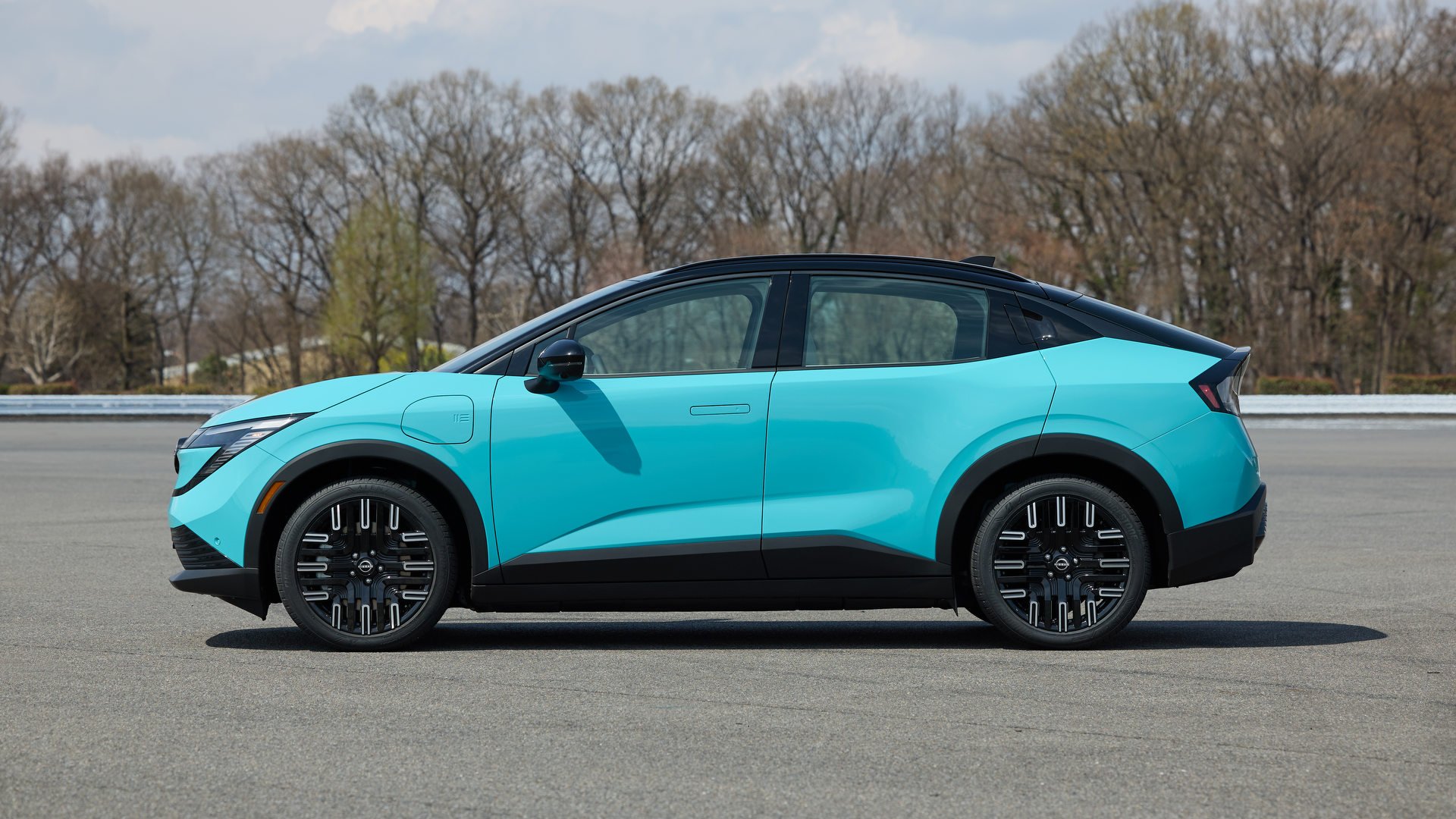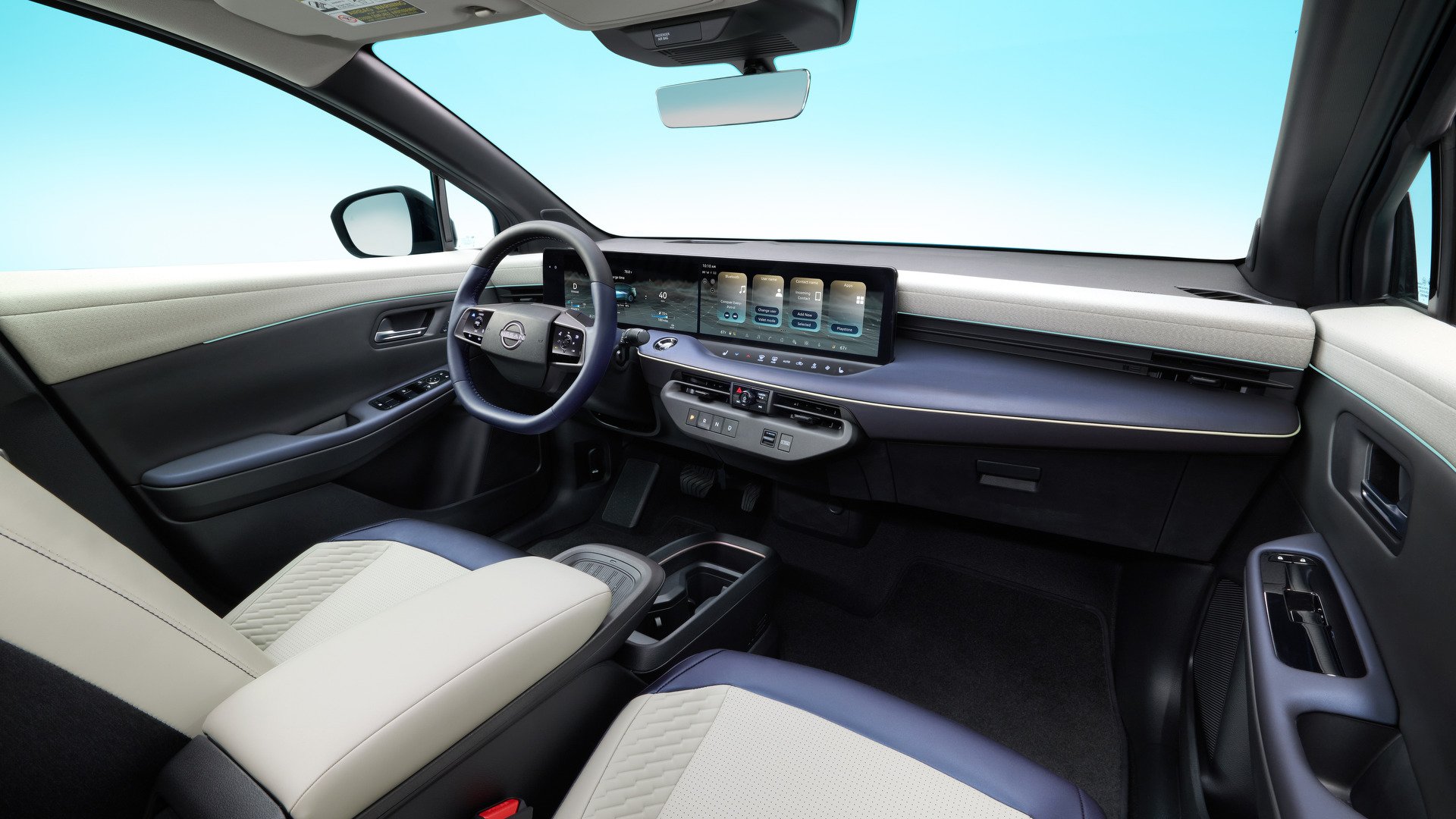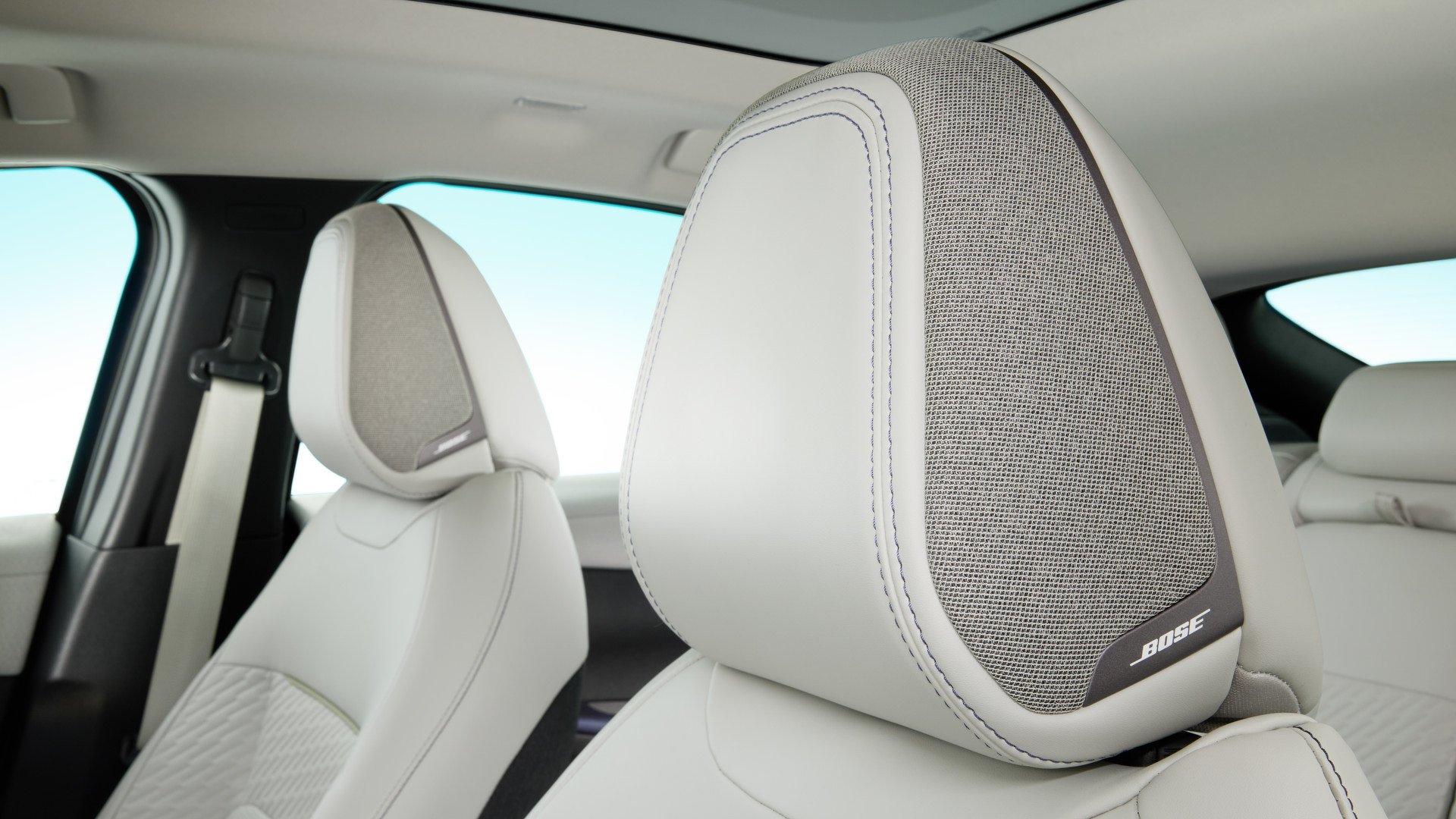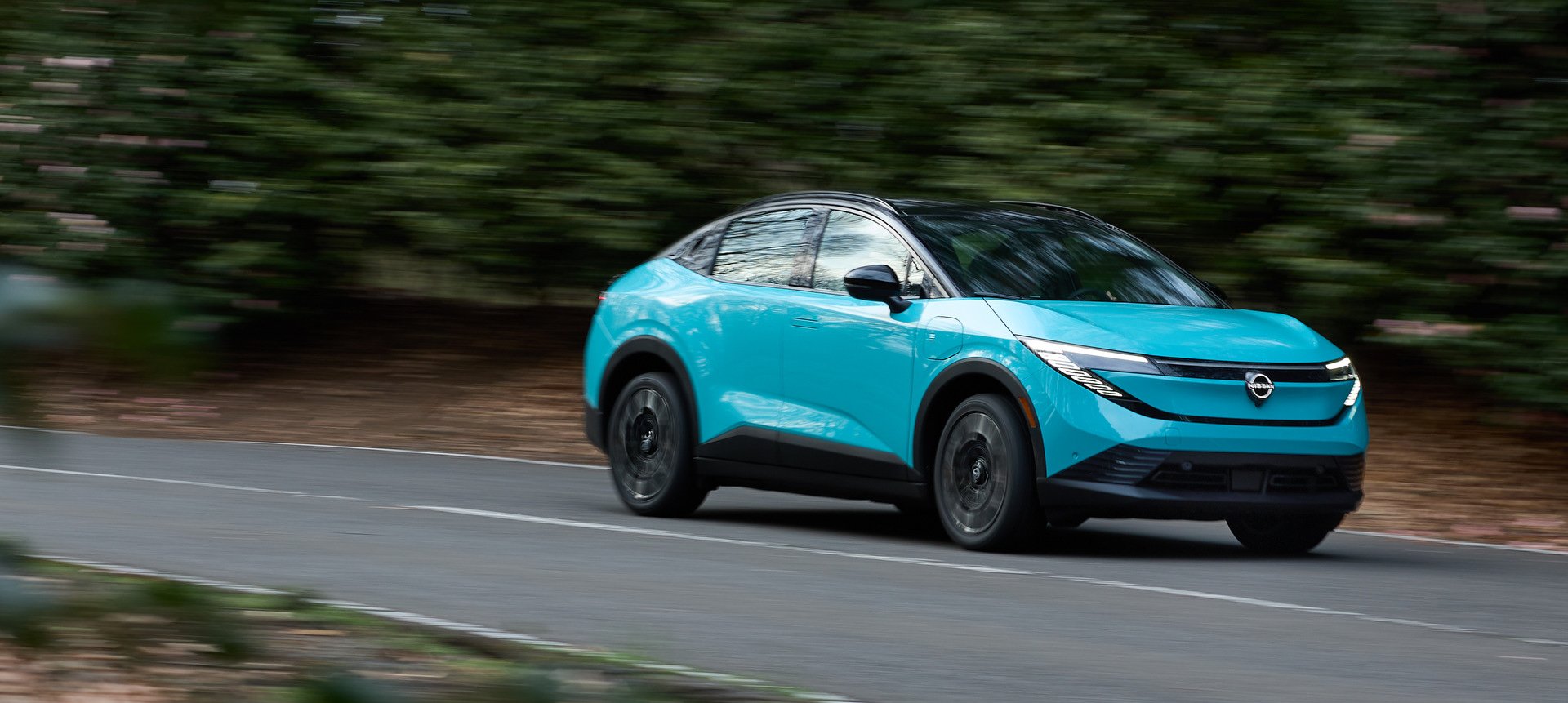2026 Nissan LEAF
2026 Nissan LEAF
The 2026 Nissan LEAF enters its third generation with a focus on addressing the practical challenges of electric vehicle ownership in the Canadian market. Moving from hatchback to crossover architecture, this redesign prioritizes passenger space, cargo flexibility, and aerodynamic efficiency—achieving a 0.26 drag coefficient through extensive wind tunnel refinement. Nissan leveraged feedback from over 12 billion kilometres driven globally by LEAF owners to inform every aspect of this model, from battery thermal management validated in northern Quebec winters to simplified charging infrastructure access. With an estimated 488 kilometres of range, dual charging ports including NACS compatibility, and Plug & Charge functionality, the LEAF targets Ottawa-area drivers seeking dependable electric mobility without unnecessary complexity. This generation emphasizes substance over styling trends, delivering functional improvements based on nearly two decades of EV development experience.
What's new on the 2026 Nissan LEAF?
Exterior
Nissan adopted crossover proportions for the 2026 LEAF, elevating seating positions and increasing overall height compared to the outgoing hatchback design. The resulting form achieves a 0.26 drag coefficient—a notable improvement from the previous 0.29—through careful attention to surface continuity and airflow management. The exterior features clean, minimalist surfacing with functional elements integrated throughout: motorized flush door handles on the front doors mark a Nissan production first, while rear handles are concealed within the C-pillar structure. The front fascia incorporates a black grille panel housing the Nissan emblem with optional illumination, surrounded by stacked rectangular headlight assemblies and an available full-width LED accent strip.
The roofline sweeps rearward in a continuous arc, highlighted by a blade-style accent trim reminiscent of the Z sports car's design vocabulary. Glass surfaces sit flush with surrounding panels, eliminating visual interruptions while reducing aerodynamic turbulence. At the rear, fenders rise sharply to meet the angled rear window, and a 45-degree spoiler mounted on the liftgate contributes meaningfully to aerodynamic performance despite its understated appearance. Nissan designers incorporated "2-3" graphic elements throughout—two rectangles paired with three perpendicular rectangles—referencing the Japanese pronunciation of the company name. These appear in lighting assemblies, wheel patterns, and interior details. SV+ models feature 18-inch alloy wheels with the 2-3 motif, while PLATINUM+ receives 19-inch wheels with distinct spoke architecture. Available colours include Seabreeze Blue Pearl with black roof, Coulis Red Pearl with black roof, Everest White Pearl Tricoat with black roof, Boulder Gray Pearl with black roof, Deep Ocean Blue Pearl, Everest White, Gun Metallic, and Black Diamond Pearl.

Interior
The LEAF interior emphasizes spatial efficiency and straightforward ergonomics. Seat redesigns increased second-row knee clearance compared to the previous generation—a frequently requested improvement from Canadian owners. Relocating shift controls to the dashboard allowed for a slimmer centre console, opening up the cabin laterally, while the flat floor beneath the dashboard eliminates central tunnel intrusion. Material selection remains practical: cloth on S and S+ trims, with TailorFit synthetic surfaces on SV+ and PLATINUM+. The range-topping PLATINUM+ includes 64-colour ambient lighting for personalized cabin illumination.
An available dimming panoramic roof represents a segment innovation, utilizing multi-layer glass that transitions between transparent and near-opaque states through electrical current application. This technology blocks light and heat when activated while providing greater headroom than traditional moonroof assemblies and improving overall aerodynamic performance. The crossover architecture raises hip points compared to conventional hatchbacks, facilitating entry and exit—particularly beneficial during Ottawa's winter months when navigating snow accumulation around vehicle doors. Cargo volume measures 55.5 cubic feet with the second row in place, and an available Divide-N-Hide organizer provides secure storage beneath the trunk floor or can be completely removed for maximum cargo capacity. Standard equipment across all grades includes dual front cupholders, four door-panel bottle holders, a glove compartment, rear window defroster, and automatic climate control with rear foot ducting.

Technology

Entertainment
Display configurations vary by grade: 12.3-inch dual screens on S and S+ models, or 14.3-inch screens on SV+ and PLATINUM+ trims. The larger displays integrate Google built-in, incorporating Google Maps, Google Assistant, and Play Store access directly into the vehicle's operating system. Google Maps includes intelligent route planning that identifies charging stops based on current battery state and destination distance, while predicting remaining charge upon arrival. Wireless Apple CarPlay and wireless Android Auto come standard across all grades. Audio systems scale by trim level: 4 speakers on S and S+, 6 speakers on SV+, and a Bose Personal Plus configuration with 10 speakers on PLATINUM+—the latter featuring headrest-mounted speakers that can direct phone calls or navigation audio exclusively to the driver's position.

Safety
Nissan Safety Shield 360 technology is standard equipment, including Automatic Emergency Braking with Pedestrian and Cyclist Detection, Rear Cross Traffic Alert, Lane Departure Warning, Lane Departure Prevention, Blind Spot Warning, Blind Spot Intervention, and Forward Collision Warning. ProPILOT Assist appears across the complete lineup, combining adaptive cruise control with lane-centring steering assistance to reduce driver workload during highway travel—particularly useful on Highway 417 commutes. Starting with S+ grade, the 3D Around View Monitor with Moving Object Detection offers eight preset camera angles for parking and low-speed manoeuvring. Front Wide View provides wide-angle perspective to see past obstacles or around corners in confined spaces, while Invisible Hood View generates a virtual perspective through the hood area to identify curbs, car wash tracks, or ground-level obstacles. PLATINUM+ adds a head-up display projecting essential driving information onto the windscreen, plus front sonar sensors complementing the standard rear sonar array.
Powertrain
An alternative powertrain combining a 53-kWh battery with a 130-kW (174-horsepower) motor will arrive in spring 2026, offering buyers flexibility in range requirements and value positioning. Dual charging ports provide operational flexibility: a J1772 port on the driver's side accommodates home charging equipment and most Level 2 public stations, while a NACS port on the passenger side accesses Tesla Superchargers and other expanding fast-charging networks. The NISSAN Energy Charge Network, accessed through the MyNISSAN app, connects drivers to over 25,000 charging locations across Canada, displaying real-time availability and enabling payment processing within a unified interface. The LEAF introduces Plug & Charge technology to Nissan's Canadian range, allowing automatic charging session initiation at compatible stations simply by connecting the cable—eliminating app navigation or payment card transactions.

Versions
Frequently Asked Questions about the 2026 Nissan LEAF
Inquire about the LEAF

